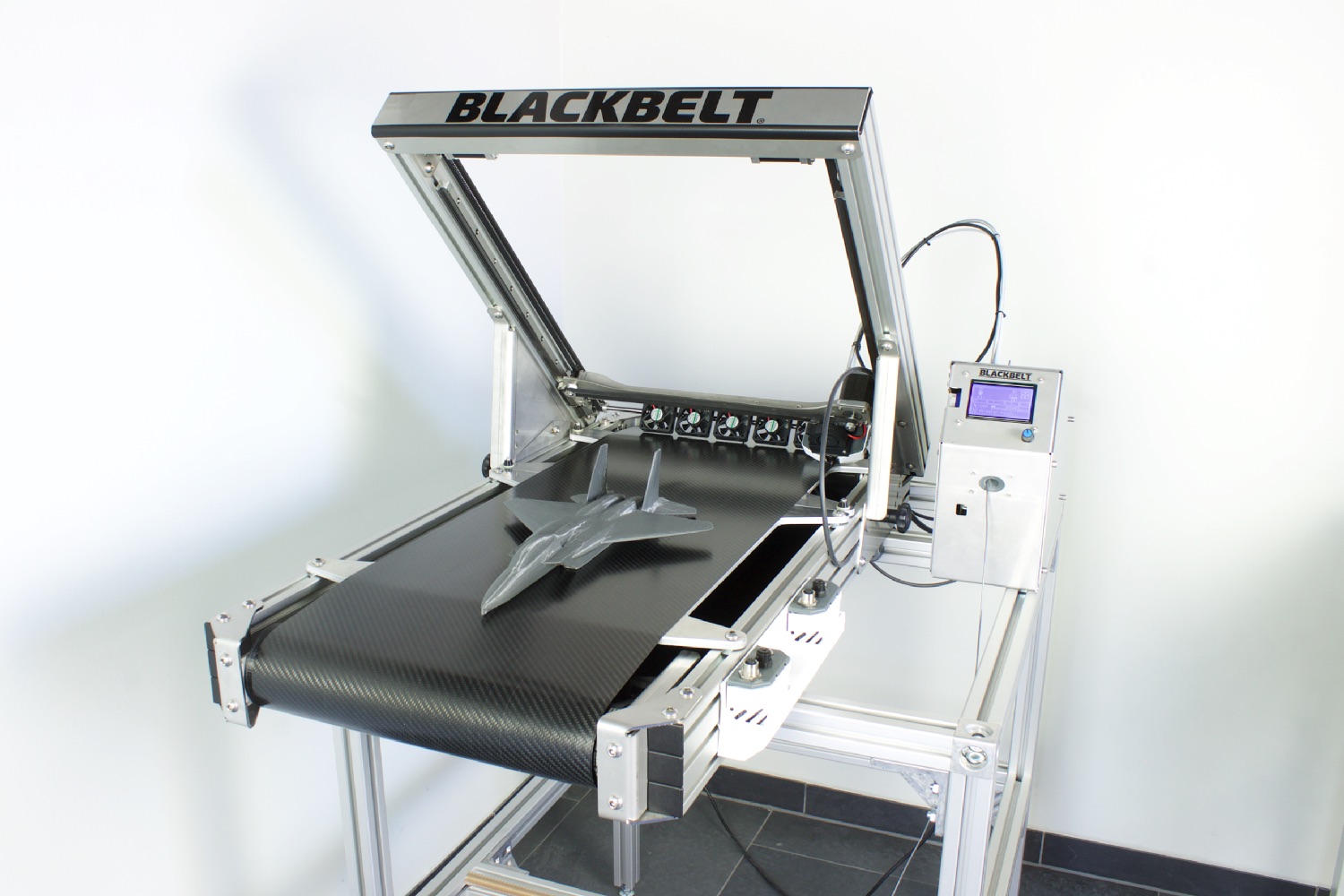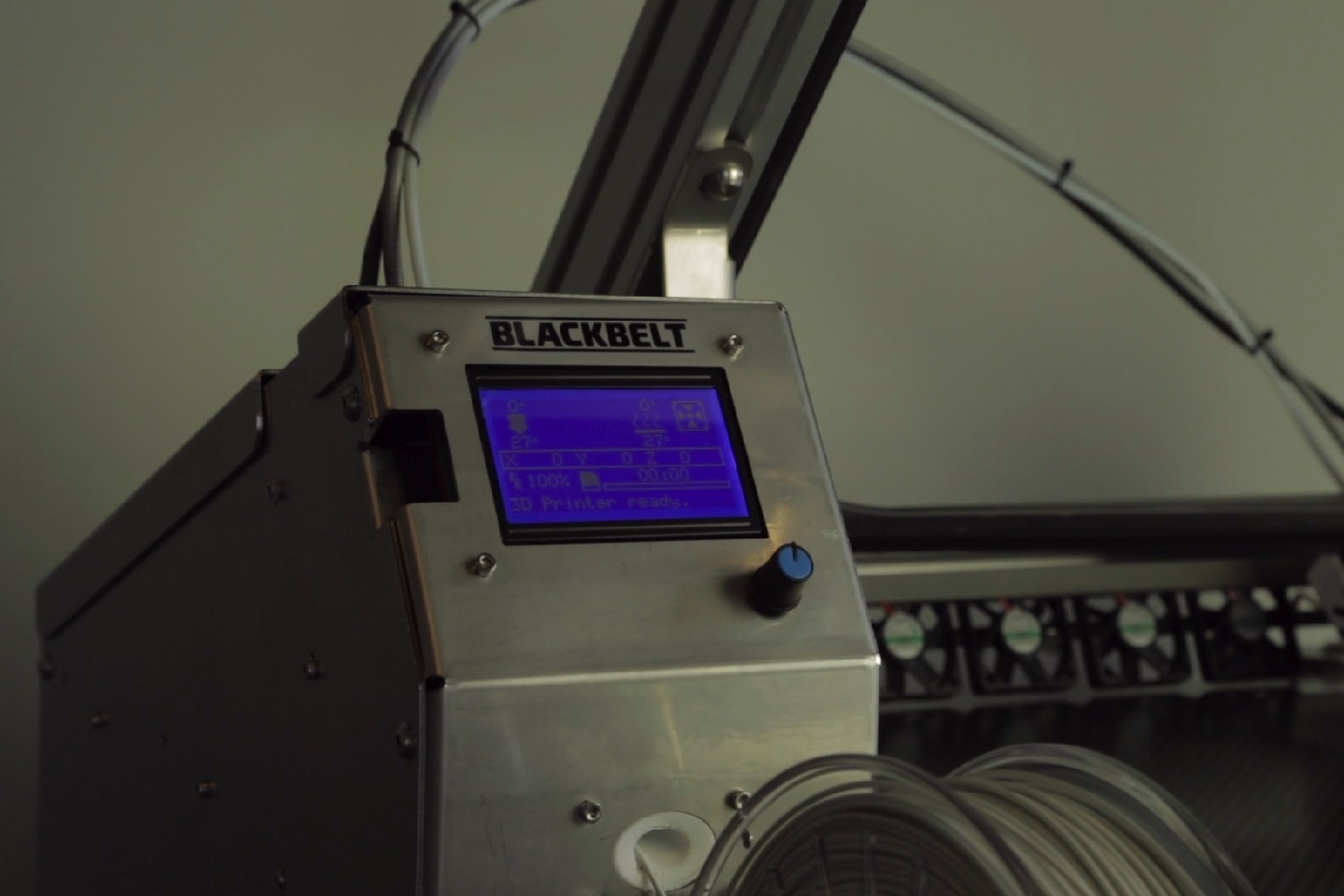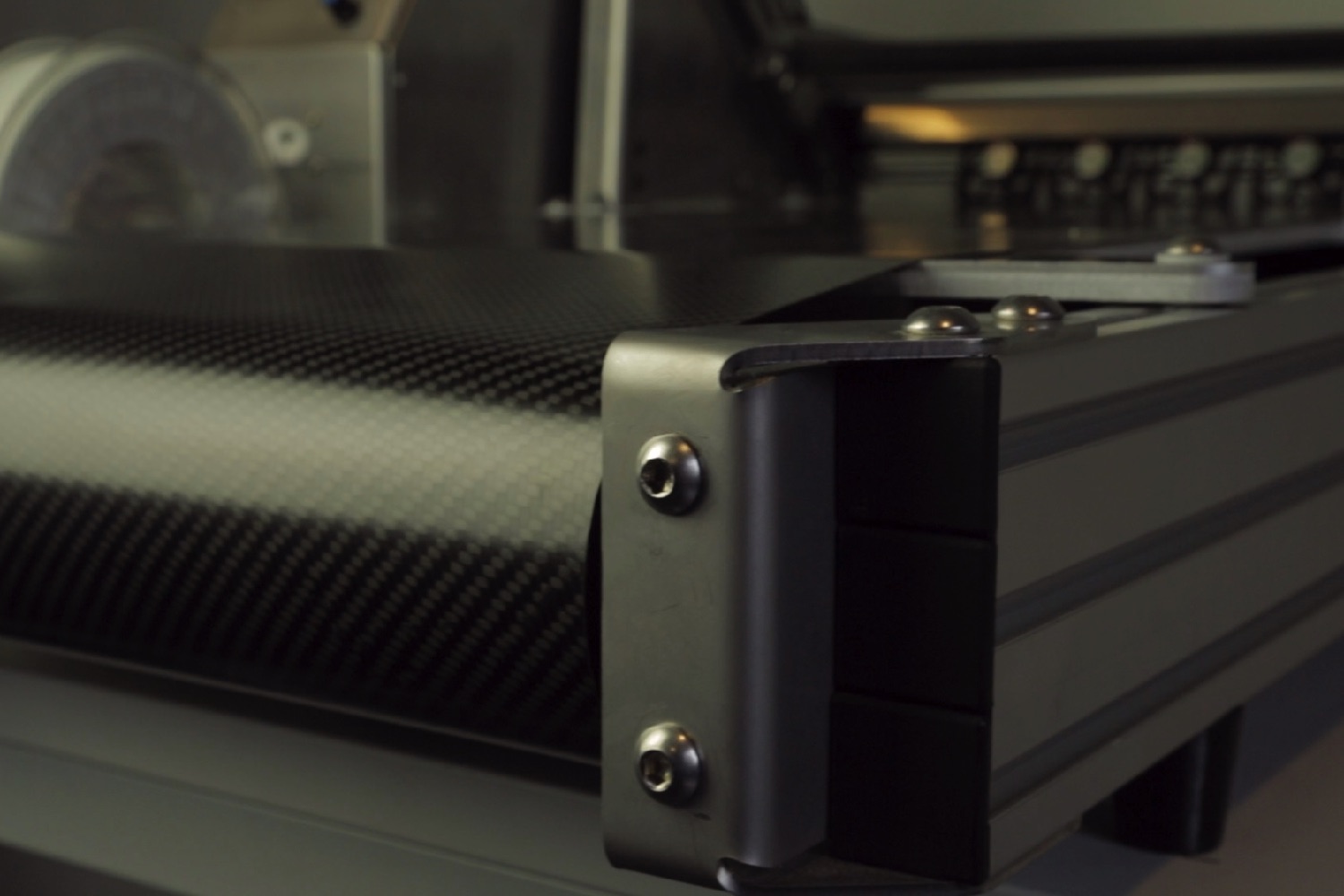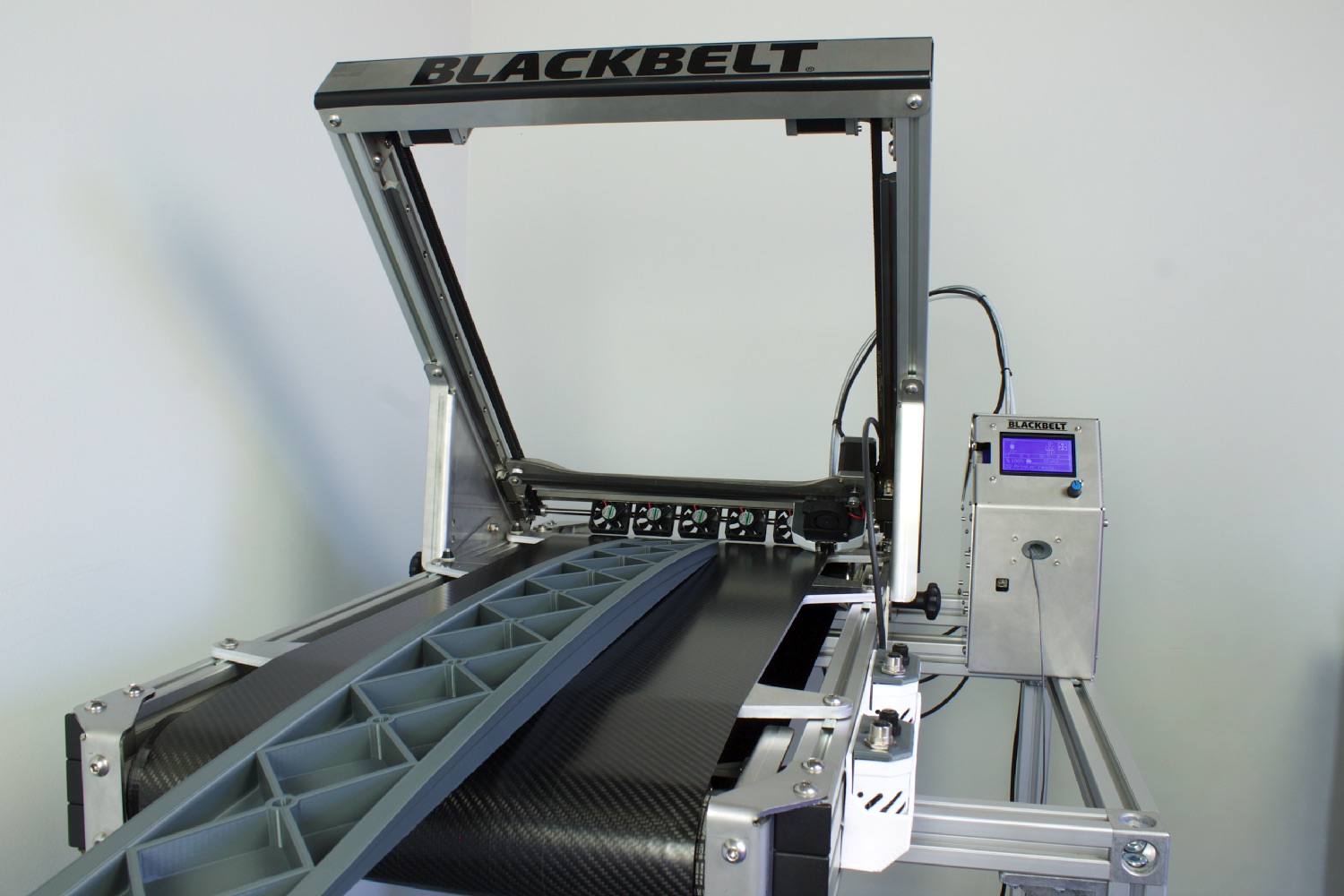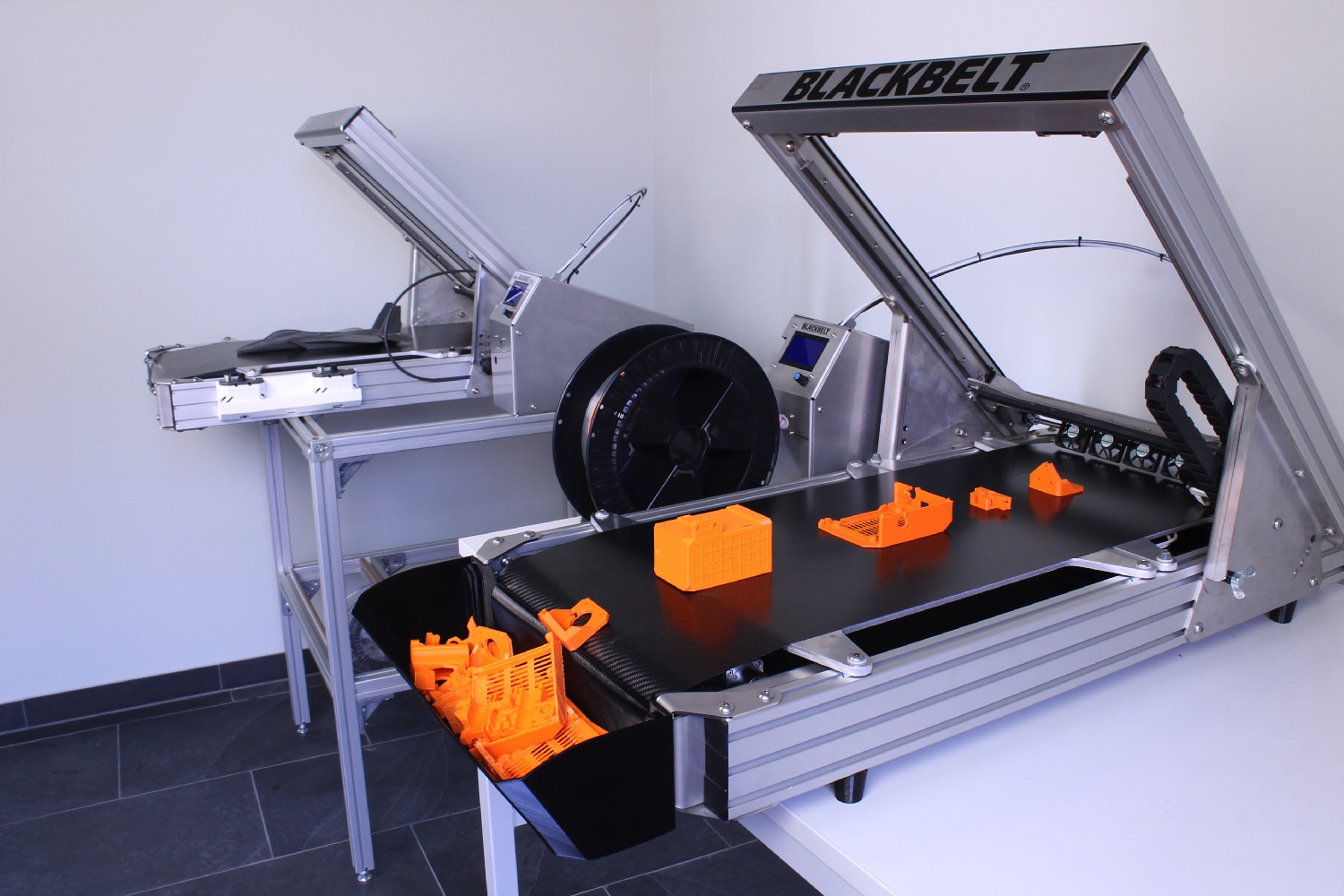That’s the case for the so-called BlackBelt 3D Printer, which set out to raise 50,000 euros (around $56,000), and managed to surpass that goal in just a quarter of an hour. The reason for the excitement surrounding it is that the BlackBelt promises users the opportunity to print pieces much longer than itself, thereby allowing makers to take their additive manufacturing fabrication to the next level.
That’s because it incorporates a high-precision conveyor belt as a print platform, which moves horizontally with every new layer that’s printed. The conveyor also means it’s possible to create queues of items, since each one can be shifted off the printing platform after it’s finished. It’s a brilliantly simple idea (at least in conception), but one that makes it possible to create pieces that — for reasons of either volume, dimensions, or both — would otherwise prove extremely challenging.
“We have designed a new type of 3D printer that has some advantages over the existing technology,” creator Stephan Schürmann told Digital Trends. “This machine allows extraordinary, long workpieces, series production, and special geometries without additional support material.”
With its use cases, footprint, stainless steel exterior, and price, everything about the BlackBelt screams “industrial 3D printer,” as opposed to one you’ll want to get for playing around with at home. Still, if you’re looking to kit out your maker space with an innovative new piece of kit, this may well be the one you’re looking for. It can currently be pre-ordered on Kickstarter, where it’ll set you back upwards of 6,500 euros ($7,300), plus shipping. It’ll be winging its way to customers this October.
You can check out more of the technical details about print volume and the like on the printer’s Kickstarter page.
